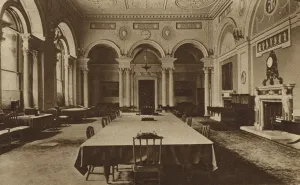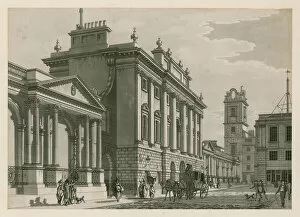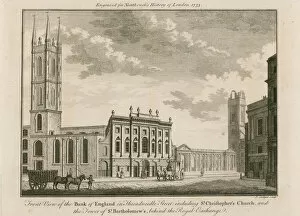Sir Robert Taylor Collection
Sir Robert Taylor, an esteemed architect of the 18th century, left an indelible mark on the architectural landscape of London
All Professionally Made to Order for Quick Shipping
Sir Robert Taylor, an esteemed architect of the 18th century, left an indelible mark on the architectural landscape of London. Known for his contributions to iconic structures such as the Bank of England on Threadneedle Street, Taylor's legacy lives on through his masterful designs. One notable work attributed to him is the engraving by Bowles and Carver in 1797 titled "A View of the Bank of England. " This depiction showcases Taylor's skill in capturing the grandeur and elegance of this financial institution that has stood as a symbol of stability for centuries. Another remarkable creation by Sir Robert Taylor is Mrs. Palmers Villa or Asgill House located in Richmond. This picturesque residence exhibits Taylor's ability to seamlessly blend classical elements with contemporary design, resulting in a harmonious fusion that still captivates admirers today. Taylor's influence extended beyond private residences; he also made significant contributions to public spaces. The West side of Poets Corner at Westminster Abbey stands as a testament to his talent for creating awe-inspiring environments where art and history converge. The Court Room at the Bank of England, captured beautifully in a black-and-white photograph, showcases Taylor's attention to detail and commitment to craftsmanship. His additions like the West Wing added in 1783 transformed this institution into an architectural marvel that exudes power and prestige. In recognition of his immense contributions, there exists a memorial dedicated to Sir Robert Taylor himself. A monochromatic photograph immortalizes this tribute honoring his life and achievements as an architect from 1718-1788. Taylor's impact was not limited solely to London; he also left his mark on Oxford with The Taylor Institute erected in 1844. Though its creator remains unknown, it serves as a lasting reminder of Sir Robert Taylor's enduring influence even beyond city limits. Lastly, Thomas Rowlandson captures the bustling atmosphere within The Bank itself during January 1792 through vivid illustrations.











